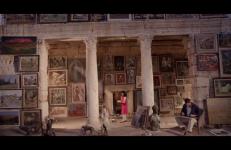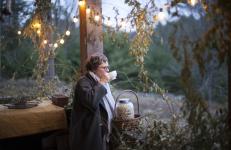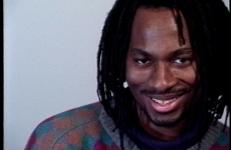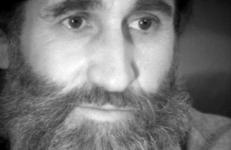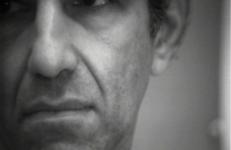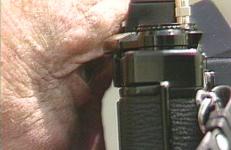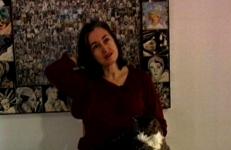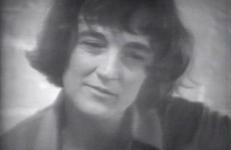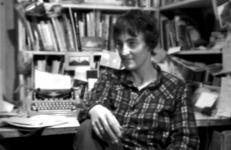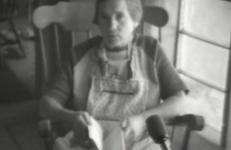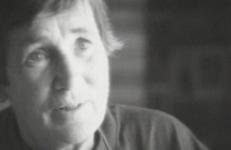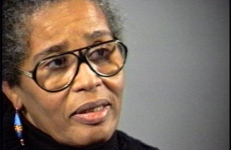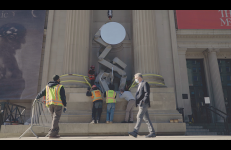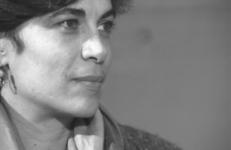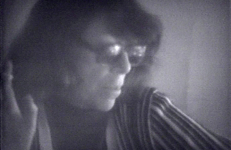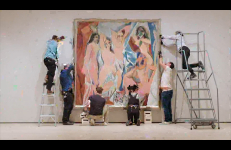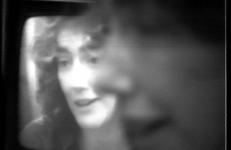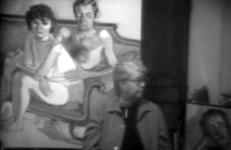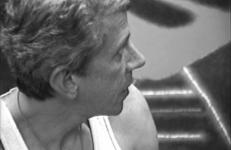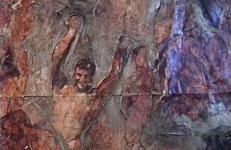Museum collections of various kinds are the object of artist Dana Levy's ongoing, consistent study in the past decade.
Visual Art
J. Morgan Puett is an internationally renowned artist living on a 95-acre compound in the deciduous forests of northeastern Pennsylvania. Touching on ideas of creative domestication, radical pedagogy, and a critical engagement with one’s environment, Ms. Puett describes her unique home, which she calls Mildred’s Lane.
“It (J. Morgan Puett: A Practice of Be(e)ing) tells a unique story of an important artist that truly lives her art. It’s an exclusive biography of a woman who is widely known to the art world but, as yet, undiscovered by our culture.”
—Roderick Angle
In this 1993 contribution to the On Art and Artists series, artist Art Jones describes his entry into the world of activist media, and the genesis of his belief in the potential for a democratized street-level media. Hailing from the Bronx, Jones recalls his personal dislocation during college, when he began studying film and video at SUNY Purchase. At that time, Jones experienced a cultural isolation, which he mobilized to fuel his practice. This willingness to confront issues of representation and absence, asserting the validity of his own subjecthood, would become a defining characteristic of his work.
In 1958, Allan Kaprow (1927-2006) published an article on Abstract Expressionism entitled The Legacy of Jackson Pollock in which he suggested the separation of the art-making activity from the art itself. Kaprow’s concept was most famously realized through Happenings, during which the traditional role of artist-creator was replaced by what he called “the social occasion.” In these events, divisions between artist and audience—and between the artwork and the perception of it—were dissolved.
American figurative artist Alex Katz (b.1927) has produced a remarkable and impressive body of work but is best known for his large-scale, flat, yet realistic portraits of friends and family notable for their relaxed attitudes and uncomplicated bearing. In the early 1960s, influenced by films, television, and billboard advertising, Katz began painting large-scale paintings, often with dramatically cropped faces.Utilizing characteristically wide brushstrokes, large swathes of color, and refined compositions, Katz created what art historian Robert Storr called "a new and distinctive type
A pioneer of the small-format camera, Andre Kertesz’s photographic vision shaped the course of contemporary photojournalism. Self-taught and non-conformist, he began photographing in Hungary in 1912 and remained there until 1925, at which time he moved to Paris. In 1936 he moved to New York City, where he felt displaced and forgotten. It wasn’t until 1964 that he was “rediscovered” and began showing in London, Paris, and New York. This video was shot five weeks before Kertesz’s death in 1985 at the age of 91.
Joyce Kozloff was at the forefront of the 1970s pattern and decoration movement—a feminist effort to incorporate typically “feminine” and popular decorative arts into the fine arts. She has been involved with public art and murals for more than two decades. In this video, Kozloff prepares and installs her mural Around the World on the 44th Parallel, which features sections of maps from 12 cities around the world on the same latitude. The work was constructed at the Tile Guild in Los Angeles and installed at the library at Minnesota State University-Mankato.
Lucy Lippard (b. 1937) earned degrees from Smith College and New York University before beginning her career as an art critic in 1962, when she began contributing to publications such as Art International and later, Artforum. In 1966, she organized an exhibition entitled Eccentric Abstraction at the Fischbach Gallery in New York City.
Lucy Lippard (b. 1937) earned degrees from Smith College and New York University before beginning her career as an art critic in 1962, when she began contributing to publications such as Art International and, later, Artforum. In 1966, she organized an exhibition entitled “Eccentric Abstraction” at the Fischbach Gallery in New York City. “Eccentric Abstraction” set the standard for what would later be regarded as postminimalism, process, or antiform art.
Originally from Canada, Agnes Martin (1912-2004) moved to the U.S. in 1931. Martin lived in Taos, New Mexico from 1954 to 1957, and then moved to New York, where she established her name as an important minimalist painter.
Originally from Canada, Agnes Martin (1912-2004) moved to the U.S. in 1931. Martin lived in Taos, New Mexico from 1954 to 1957 and then moved to New York, where she established her name as an important minimalist painter. Her work differed conceptually from the minimalist movement in that it was anti-intellectual and intensely spiritual, and her grids represented meditative reflections on Taoism.
In this 1996 interview, African-American sculptor, printmaker and designer Valerie Maynard (b.1937) describes growing up in Harlem in the mid-20th Century and her awareness of the importance of community during her upbringing. Recalling the prominence of the Baptist church in her early life, Maynard discusses how religion brought her into contact with local politicians who impressed upon her the importance of affecting change. The artist notes how an early affiliation with Congressman Adam Clayton Powell and her brother’s incarceration propelled her interest in social justice and the workings of the judicial system.
This film originated as an expanded portrait of artist Carol Bove as she created four monumental sculptures commissioned by the Metropolitan Museum of Art. One week after filming began, New York City went into its first pandemic lockdown. Filmed against the backdrop of the progressing pandemic, Medium evolved into a meditation on materiality and the artist as a medium through which ideas move into the world.
Performance artist/sculptor Ana Mendieta used the raw materials of nature: water, mud, fire, rock, and grass. The consciousness of her politics and the poetics of her expression fill her work with an emotionally charged vision that is powerfully conveyed in this posthumous video profile. Drawing upon the raw spiritual power of Afro-Cuban religion, Mendieta used her art as a ritualistic and symbolic activity to celebrate the forces of life and the continuum of change.
Performance artist/sculptor Ana Mendieta used the raw materials of nature: water, mud, fire, rock, and grass. The consciousness of her politics and the poetics of her expression fill her work with an emotionally charged vision that is powerfully conveyed in this posthumous video profile. Drawing upon the raw spiritual power of Afro-Cuban religion, Mendieta used her art as a ritualistic and symbolic activity to celebrate the forces of life and the continuum of change.
Mary Miss (b.1944) is an American environmental artist who works with concepts of illusion, distance, and perception. Her site-specific work frequently uses both ancient and modern architecture as references. Miss's 1977 installation Perimeters/Pavilions/Decoys at the Nassau County Museum of Art, served as one of Rosalind Krauss's inspirations when she defined postmodern sculpture in her article, "Sculpture in the Expanded Field."
Joan Mitchell (1925-1992) was a "second generation" abstract expressionist painter and printmaker. She was an essential member of the American Abstract expressionist movement, and one of the few female painters to gain critical and public acclaim in the era.
Cyclops / "monitor" / minotaur.
Note: A 20-second video loop self-portrait.
A brief glimpse of a confessional detour during a pictorial drift.
Elizabeth Murray (1940-2007) was an American painter, printmaker and draughtsman. She studied at the Art Institute of Chicago (1958–62) and at Mills College, Oakland, CA (1962–4). Elizabeth Murray’s paintings have been referred to as “dandyish abstraction.” Her work is distinctive in its use of color, shape, and surface to evoke human characteristics, personalities or humor.
Alice Neel (1900-1984) is known for portrait paintings of well-known persons and eccentric New York street types. Neel worked as a figurative painter throughout the decades of WPA realism, postwar abstract expressionism, 1960s Pop, and 1970s minimalism. She persevered in her work despite a turbulent personal life and critical neglect that continued until the 1960s. Neel lived and worked in New York City from 1932 until her death in 1984.
"A trance is a state of detachment with aspects of the ecstatic. Paradoxically, a trance can be induced by a surfeit of input or by its deprivation... In Anthony Discenza's Object 8242600, television imagery is reduced to a flood of unanchored signifiers reorganized as a motive mosaic."
—Steve Seid, Pacific Film Archive
Dennis Oppenheim was a prominent figure in various art developments throughout the ’70s. Oppenheim moved through body/performance art and related video work to earthworks to his current large-scale “factories.” In all of his work, the transference of energy is an underlying concern.
Polish-American arist Ed Paschke (1939-2004) received his BFA from the School of the Art Institute of Chicago in 1961 and his MFA in 1970. Paschke was known as a member of the late-1960s Chicago Imagist movement, a group of artists who called themselves The Hairy Who, whose expressive style of figurative painting was rooted in outsider art, popular culture, and Surrealism. Paschke's fascination with the print media of popular culture led to a portrait-based art of cultural icons. Paschke used the celebrity figure, real or imagined, as a vehicle for explorations of personal and public identity with social and political implications.
Paint drips and body fluids ooze in this "tell all" and "hide nothing" documentary about two San Francisco males.




